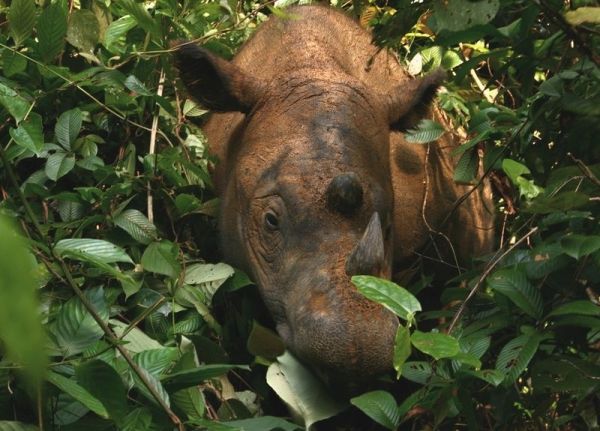The Sumatran rhino, the smallest, shaggiest, and most endangered of the world’s five rhinoceros species, is found only on the Indonesian islands of Sumatra and Borneo. This rhino’s solitary nature and preference for dense forests makes it difficult to count, but researchers believe that fewer than 80 survive outside captivity; most of those are isolated in tiny populations, severely threatened by poaching and road construction. The species was one of the first added to the international Red List of Threatened Species when the list was established in the 1960s, and it has remained on the list ever since, its status slipping from “Endangered” to “Critically Endangered” in 1996. Like so many other species on the Red List, the story of the Sumatran rhino appears sadly two-dimensional, a single line that too often points downward.
The official story of the Sumatran rhino — and that of other vulnerable species worldwide — is now undergoing a dramatic revision. At the quadrennial World Conservation Congress, which begins this week in Marseille, France, the International Union for Conservation of Nature (IUCN) — the intergovernmental organization that oversees the Red List — will formally introduce the Green Status of Species, a set of metrics designed to characterize the past and potential future recovery of each species on the Red List.
Read more at Yale Environment 360
Photo Credit: Willem v Strien via Wikimedia Commons


